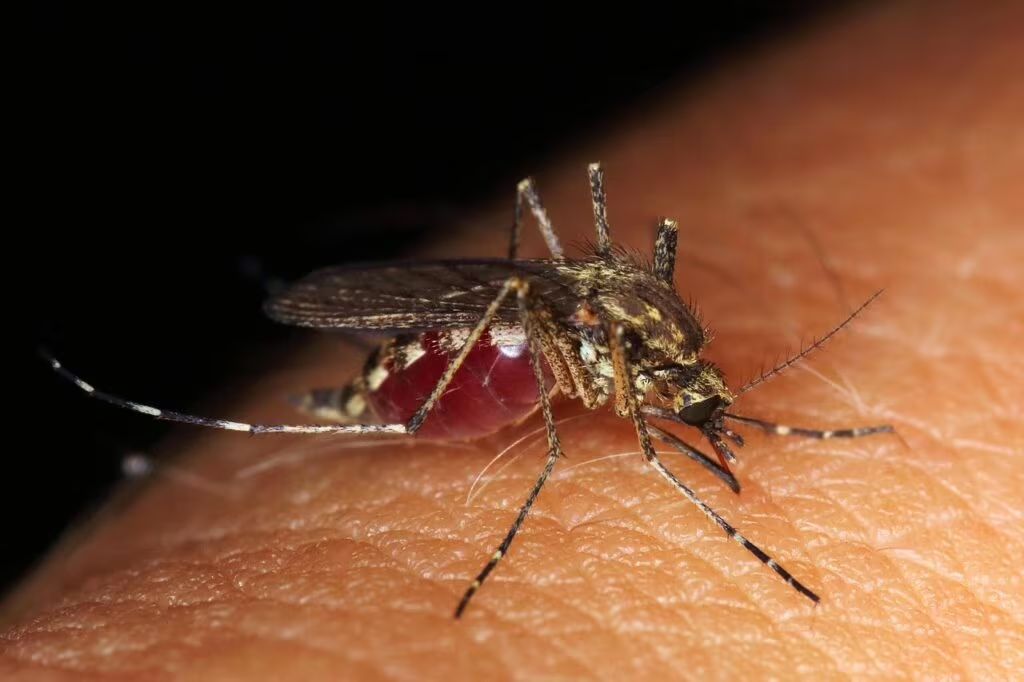Urgent Warning After Yard Work Leads to Severe West Nile Virus Infection
The simple act of cutting the lawn turned into a life-threatening ordeal for an Ontario resident this past summer. The man, who contracted West Nile Virus (WNV) after being bitten by a mosquito while doing routine yard work, suffered a severe neuroinvasive infection. His harrowing experience serves as an urgent public health warning, emphasizing that even familiar outdoor chores carry significant risks as mosquito seasons lengthen.

The Onset of a Dangerous Disease
The incident occurred during Canada’s unusually warm summer in 2025, a season that provided an extended breeding and activity period for mosquitoes across the province. While the vast majority of WNV infections are asymptomatic or result in mild, flu-like symptoms, this man’s case quickly escalated into the most dangerous form of the illness.
His symptoms progressed rapidly, moving beyond typical fever and aches to severe neurological complications, including inflammation of the brain (encephalitis) or the membranes surrounding the brain and spinal cord (meningitis). This required immediate hospitalization and intensive care, resulting in a prolonged and challenging recovery period.
His primary motivation for sharing his story was to alert the public to the hidden danger lurking in backyards.
“Make sure that people are aware [of the risk],” he stated, emphasizing the need for vigilance even when performing familiar tasks like yard work. “I never thought something like this could happen just cutting the grass.”
Understanding West Nile Virus: The Spectrum of Illness
WNV is transmitted to humans through the bite of an infected mosquito, which typically acquires the virus by feeding on infected birds. Public health data consistently shows that while WNV is endemic in many regions, the severity of human cases varies dramatically:
- Asymptomatic Infection (Approx. 80%): Most people infected with WNV show no symptoms at all.
- West Nile Fever (Approx. 20%): Symptoms include fever, headache, body aches, joint pains, vomiting, diarrhea, or rash. Full recovery is expected, though fatigue and weakness can persist for weeks or months.
- Neuroinvasive Disease (Less than 1%): This severe form affects the central nervous system and includes West Nile encephalitis, meningitis, or West Nile poliomyelitis. These cases often require hospitalization and can result in permanent neurological damage or death.
The risk of developing severe neuroinvasive disease increases significantly with age and in individuals with compromised immune systems.
Why the Risk is Growing: Climate and Mosquito Season
The extended mosquito season witnessed in Ontario in 2025 is consistent with broader trends linked to climate patterns, which significantly impact the epidemiology of vector-borne diseases.
Warmer temperatures allow mosquitoes, the primary vectors for WNV, to thrive and increase the risk of transmission:
- Accelerated Reproduction: Higher temperatures speed up the mosquito life cycle, leading to larger, faster-growing populations.
- Extended Activity Window: The period for mosquito activity starts earlier in the spring and lasts later into the fall, increasing the overall exposure time for humans.
- Increased Virus Replication: The virus replicates more quickly inside the mosquito, making the insect infectious sooner after feeding on an infected bird.

Public health authorities, including the Public Health Agency of Canada (PHAC), continually monitor mosquito populations and WNV activity. The warning issued by the affected resident reinforces official guidance that preventative measures must be maintained throughout the entire warm season, not just the peak summer months.
Essential Strategies for Preventing Mosquito Bites
For residents engaging in outdoor activities, particularly yard work, vigilance is the most effective defense against WNV and other mosquito-borne illnesses. Prevention focuses on two main areas: personal protection and source reduction.
Recommended Personal Protection Measures
| Strategy | Detail | Why It Works |
|---|---|---|
| Timing | Avoid outdoor activity during peak biting hours: dusk and dawn. | Mosquitoes carrying WNV are most active during these times. |
| Repellent Use | Apply insect repellents containing DEET, Picaridin, Oil of Lemon Eucalyptus (OLE), or IR3535. | These chemicals disrupt the mosquito’s ability to locate a host. Follow label instructions carefully. |
| Protective Clothing | Wear long sleeves, long pants, and socks when outdoors, especially in wooded or grassy areas. | Creates a physical barrier between skin and mosquitoes. Light colors are often preferred. |
Source Reduction: Eliminating Breeding Grounds
Mosquitoes require standing water to lay their eggs. Eliminating these sources around your property is crucial for reducing local populations:
- Empty Containers: Regularly empty containers that hold water, such as bird baths, flower pots, pet dishes, and old tires.
- Maintain Gutters: Ensure eavestroughs and gutters are clean and draining properly to prevent water accumulation.
- Cover Pools and Ponds: Treat or cover rain barrels, swimming pools, and ornamental ponds. Stocking ponds with mosquito-eating fish can also be effective.
- Check Tarps: Ensure tarps covering equipment or woodpiles are taut so water cannot collect in folds.
Key Takeaways
This severe case of West Nile Virus serves as a critical reminder of the ongoing risk posed by mosquitoes in Canada, particularly during extended warm seasons:
- WNV is a Serious Threat: While rare, neuroinvasive WNV can cause severe, life-altering illness requiring intensive care.
- Yard Work Risk: Routine outdoor activities, such as cutting the lawn, expose individuals to potential mosquito bites.
- Extended Season: Warmer climate trends are lengthening the active season for WNV-carrying mosquitoes, demanding year-round vigilance during warm months.
- Prevention is Key: Public health officials stress the importance of using insect repellent, wearing protective clothing, and eliminating standing water sources.
What’s Next
Public health units across Ontario and Canada will continue enhanced surveillance programs, monitoring mosquito traps and testing for WNV activity throughout the remainder of the warm season. Residents are urged to heed the warnings and adopt preventative measures immediately. If you experience severe symptoms—especially high fever, confusion, severe headache, or muscle weakness—after a potential mosquito exposure, seek medical attention promptly.
Original author: Geri Mileva
Originally published: November 8, 2025
Editorial note: Our team reviewed and enhanced this coverage with AI-assisted tools and human editing to add helpful context while preserving verified facts and quotations from the original source.
We encourage you to consult the publisher above for the complete report and to reach out if you spot inaccuracies or compliance concerns.

